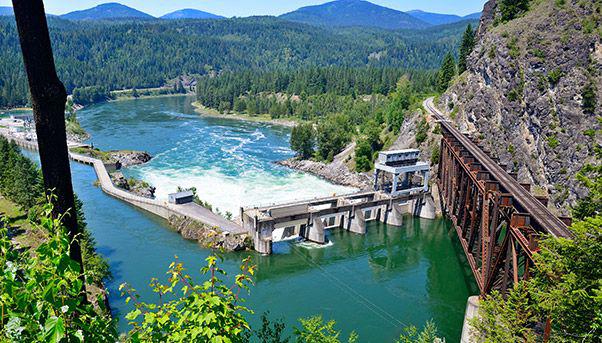
The United States needs to invest $1 trillion during the next 25 years in its drinking water network and wastewater management if it wants to avoid the risk of a water crisis, according to calculations by the National Water Resources Association and the American Water Works Association, two leading industry groups.
That is $1 trillion to avoid the 240,000 water main breaks that plague the country’s water supply every year at a cost of $2.6 billion. The country needs to plug the holes, and then upgrade the whole system, from dams to pipelines, water treatment plants to sewers. If these steps are not taken, according to a report published by the water industry during Water Week 2018, an annual event held in Washington, D.C., there could be a potential cost of $4.1 trillion against the country’s gross domestic product.
A giant still living in the past
The U.S. water network is under enormous stress – and this stress is growing as the population and the economy grow. The network provides water to irrigate 55 million acres of land and meet the domestic needs of 315 million people.
From large industries to small businesses, city governments to individual citizens, everyone needs water. And the demand is steadily increasing even though the supply is still being provided by an obsolete infrastructure network.
According to the Brookings Institution (one of the most prestigious think tanks in the United States), 40% of pipelines are more than 40 years old, while some infrastructure dates back to World War I. One fifth of the water transported in the country is lost, for a total of seven billion gallons per day.
This situation must be turned around, given that the U.S. population will reach 400 million people by 2050. That means there will be a further increase in demand for water and even more pressure on the existing – and inadequate – infrastructure.

More investment needed
Despite the urgent need for investment, the federal government has a limited role in water infrastructure. Only 4% of funds allocated to the sector are federal, with the remainder coming from the states, local administrations and private individuals.
Water utilities play a crucial role. The Brookings Institution calculates that the 30 most important water utilities have a turnover of $52 billion and employ 289,000 people.
These utilities make almost all of the investments in the sector, but the amount is not enough to meet the needs of the network and the community.
Data on dams confirm that investment is mainly in the hands of private investors. According to the National Inventory of Dams, only 3.7% of the 90,000 dams are owned by the federal government; 7.3% are owned by individual states and 20% by local governments. The rest, or the majority, are owned and managed by private companies. These companies perform a public service, and yet the dams they own are becoming obsolete: 62,700 out of a total of 90,000 were in fact built before 1970 and 17.1% were declared to be exposed to high risk by the American Society of Civil Engineers (ASCE).
The cost of not investing
Not investing in the sector has a double effect: first, it impacts the lives of people and the business of companies, which must deal with the scarcity of water; secondly, the economic impact due to inefficient management creates an inevitable increase in costs.
Since 2010, consumers have seen their water bills increase by an average of 48%.
That is why people are increasingly aware that it is time to take urgent steps to improve the water infrastructure. The Brookings Institution calculates that 88% of Americans believe measures must be taken to solve the country’s water management problems and only 17% of utilities in the sector believe that the level of economic spending is sufficient to meet the community’s demand for water. Investments must be made as soon as possible to prevent the system from collapsing.

